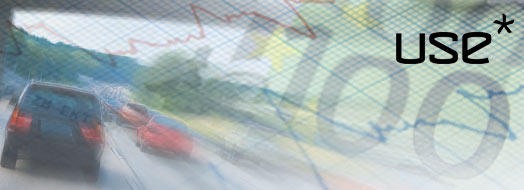Quantifying the actual impact of SERP Services in terms of Warranty Avoidance
When we talk about SERP results in terms of tens, even hundreds, of millions, this is not hyperbole. USE* SERP services and processes deliver real, tangible, warranty avoidance benefits that no OEM can afford to be without.
Jonathan Quaife, USE* Managing Director
Digital serviceability support from USE* Automotive promotes and enculturates a design for serviceability mindset into product development activities. USE* classify these services as SERP (Service Evaluation and Repair Process), reflecting both the competent expertise that we deploy to support this function and our out of the box process toolset that we can provide and adapt to any of our clients’ product development PLM systems.
The raison d’etre for these services is to deliver Cost of Ownership and warranty avoidance benefits for our customers by improving vehicle design from a serviceability standpoint. In 2010, USE* conducted an appraisal into the impact of our services by assessing actual warranty data for one of our customer’s vehicles released as a MY09 product.

The Challenge
Services from USE* answer to the commercial reality that, for our customers to spend money with us, we need to save them what they spend, and more besides. In fact, where SERP support is concerned, a lot more.
In general our customers can expect a return of investment of well over 1,000% on what they pay USE* for SERP services, which since between January 2006 and December 2009 notched up well over US$200 million of predicted warranty expenditure avoidance.
These numbers are spectacular, of course, but the sales proposition for SERP often comes up against two key conceptual obstances:
- firstly, USE* SERP services provide support for vehicle development programmes years before the products will see the light of a dealer show room,
- and secondly, how can USE* expect anyone to be convinced that the predicted warranty avoidance, or something approximating it, will ever be realised?
The Solution
These obstacles are quite legitimate concerns - in fact, they are questions that we often asked ourselves.
Accordingly, as soon as we were able to, we set about establishing the facts.
Being able to do so was simply a question of time, and the opportunity arose in 2010 when sufficient warranty data for one of our customers' 07 model year programmes that had been supported by USE* SERP services became available to quantify. In order to understand how the actual impact of SERP support can be measured, it is first necessary to briefly outline how the predicted total is arrived at.
When we supported our customer’s 07 model year programme, SERP methods were different to how they are today. Even so, data was available to make a reasonable assessment. At the time we provided support for the 07 model year product labour time differentials were calculated only to build a business case justifying (or not) a design change. In other words, to quantify the service repair labour time for the ‘as is’ design condition compared to the ‘as proposed’ design condition.
Predicted warranty avoidance figures are predicated around three variables:
- the customer’s predicted build volume for a given product
- the quantified cost saving for a design improvement in terms of reduced (or different) labour time costs, and/or reduced piece cost and associated costs for the part used in the service repair
- a predicted rate of repairs per thousand vehicles, based on extant warranty data for current parts
Thus, as a formula:
- warranty avoidance is calculated as: predicted cost saving per repair x predicted build volume in thousands x predicted failure rate per thousand
Altogether this meant that for the twenty-or-so design changes that our services had delivered (effecting forty or so service repairs) for the 07 model year product, each one could be compared on the following basis:
- customer’s predicted build volume versus actual build volume to date
- the predicted saving per repair versus the actual saving per repair
- the predicted repairs per thousand frequency versus the actual repairs per thousand frequency
Its Benefits
This exercise has marked the beginning of an ongoing assessment of our SERP Design for Service work in terms of impact on real warranty expenditure. It allows USE* and our customers to feel confident with regard to the value of the services that USE* deliver, and with regard to the predicted figures that we present going forward. Commensurately, it has provided a basis for the refinement of USE* methods towards predicted warranty values from 2010 and onwards.
Our Achievements
Our analysis showed that predicted savings per repair versus actual saving per repair was consistently and on average within 5%.
The predicted repairs per thousand frequency versus the actual repairs per thousand frequency did show significant improvements from product engineers and suppliers (in other words, actual proportion of repairs was lower than predicted).
The build volume comparison also reflected a product in its early production lifecycle.
Overall, the USE* predicted warranty saving figure was shown to be high, with, as a rule of thumb, the actual warranty saving total being realistically assessed at around 70% of the predicted.
This was still a dramatic and very successful outcome for USE*, and for our customer, representing a return on investment for our customer at 2100% of the funds invested in USE* support.
Beyond this, this study provides a concrete demonstration that USE* SERP services and processes deliver real, tangible, warranty avoidance benefits that no OEM can afford to miss.
Case Studies
Case Studies
Body Bracing Collaboration
USE* avert warranty from late design changes
Special Service Tools
Reducing SST numbers and dependency
Fuel Pump Module Access
Early collaboration averts fuel tank R&I
Wheel Arch Liner
A simple solution delivers a big warranty savi...